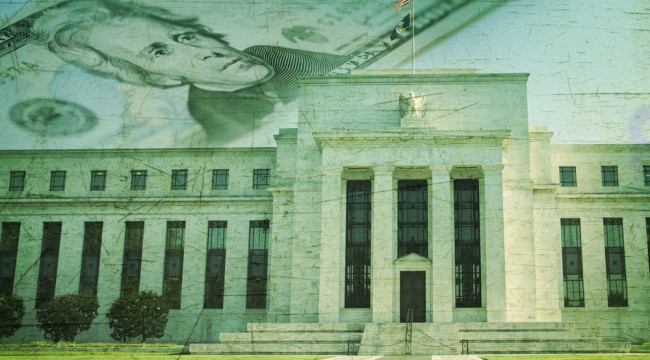Financial Lessons from the Head of the Fed
In the documentary, Money for Nothing: Inside the Federal Reserve, current Fed chair, Janet Yellen gave rather candid answers to questions the American public has about how the Fed works and actions they took since the financial crisis. I will highlight some of the questions, capture her response, and provide commentary.
Was the Federal Reserve justified in bailing out the entire financial system in ’08-’09?
Janet Yellen: This is why the Fed was set up in 1913. It is to provide liquidity to the financial system as a whole at a time when you have a financial panic. Liquidity dries up in the market and prices can just go into free-fall ultimately bankrupting not only the entities associated with the start of the trouble but anyone who has any connection to them.
Comment: Whatever your feelings on whether the Fed should have been created in the first place, it is true that their stated goal was to provide liquidity in the financial system. Certainly prices can go into free-fall. The issue really is WHAT prices would have gone into free-fall and who would have been affected by their fall. David Stockman did a nice job of debunking the theory that the entire credit system would seize up in the, albeit difficult read, The Great Deformation. No doubt Wall St. and the large investment banks would have taken a beating (see Lehman Brothers and Bear Stearns) though I think it is much more debatable if small to mid-sized banks would have been affected in the same way.
Does the Fed favor Wall Street over Main Street?
Janet Yellen: Our commitment is to the well-being of America’s households. I know it looks like we are very focused on the financial system. That should never be mistaken as a focus on Wall St. as opposed to Main St. We may make mistakes and we face complex challenges. As we have gone through this crisis, the Fed has had to intervene in ways that are dramatic. People have been angry that resources have been channeled towards institutions that were the cause of the financial panic. Those of us inside the Fed have the same anger. Our focus is on creating jobs and price stability.
Comment: I appreciated her candor about the mistakes they made given their complex challenges. I might suggest that some of those challenges are self-inflicted since their original charter was not to create jobs and stabilize prices. If one argues that the Fed should be there to provide liquidity, that is one thing. To say they need to create jobs and stabilize prices is another. Another point… providing liquidity was originally defined as giving banks cash required in the event of a systemic bank run. Bank runs were not a problem in 2008 but rather the price collapse of derived financial products traded by large investment banks. This is problem #1 with the Fed. They have expanded their mission and have been anointed Wizards by government and the financial system.
Didn’t the Fed know that low interest rates…would stimulate the housing market…concerned about fueling a bubble?
Janet Yellen: The stimulus that the Fed applied to the economy in ’03-’05 was intended to reduce high unemployment, idle capital and idle resources. When interest rates go down, of course, spending that is sensitive to interest rates rises and housing is highly interest rate sensitive. No surprise this gave rise to a boom in housing. The Fed was not behaving in a way that was irresponsible. We did end up with financial excesses.
Comment: Interesting that her predecessor, Bernanke, did not see the housing bubble at all. Yellen also commented that despite the fact that she acknowledged that a boom in housing would emerge, she could not conclude this would lead to a bubble. A couple of points I will make. First, and once again, it is not the Fed’s job to reduce unemployment. Secondly, if she concludes accurately that they were going to create a housing boom, how does she distance that conclusion from a bubble? In my book, I outlined the steps needed for a bubble creation and one was “The means to speculate with credit.” Lower Fed interest rates = means to speculate.
Can the U.S. grow its economy without creating bubbles?
Janet Yellen: We have a problem transitioning to an economy that seems like it’s operating on a sound basis in all sectors of the economy without having dangerous overhangs of debt. Households probably need to save more. Consumer spending should be a smaller share of GDP. The government also has a lot of debt. If we go another decade, 20 years without dealing with it [government debt], that’s going to be a crisis. What’s going to get us to full employment? Investment can’t fill up that whole gap. The only answer I can see is our net exports to the rest of the world. I think the rest of the world, and particularly Asia, needs to focus more on consumer spending.
Comment: Certainly households should save more. They did for the early part of the recession but now the trend has reversed. She indicates that consumer spending should not be counted on to revive the economy yet that is precisely what low interest rate policies are trying to coax. She suggests that government debt is not a problem right now. Of course when her own Fed is buying $85 billion of Treasuries per month, I guess that masks the crisis. If they were not making these purchases, longer term interest rates would be higher and would encourage the very savings she suggests households need. Encouraging other countries to spend and buy our goods and services is a logical approach except that the Euro zone is having their own problems and China is one massive bubble.
Regards,
Jim Mosquera
for The Daily Reckoning
Ed. Note: As long as the Fed exists, it will continue to try to “fix” the economy through its dual mandate to create jobs and stabilize prices. And no matter how this influences is the economy, you’ll want to insure the safety and security of your own financial future. That’s why The Daily Reckoning exists… to provide readers with the knowledge they need to safeguard and grow their wealth no matter what happens. Sign up for the Daily Reckoning, for FREE, right here and start discovering actionable investment solutions for whatever happens next.



Comments: